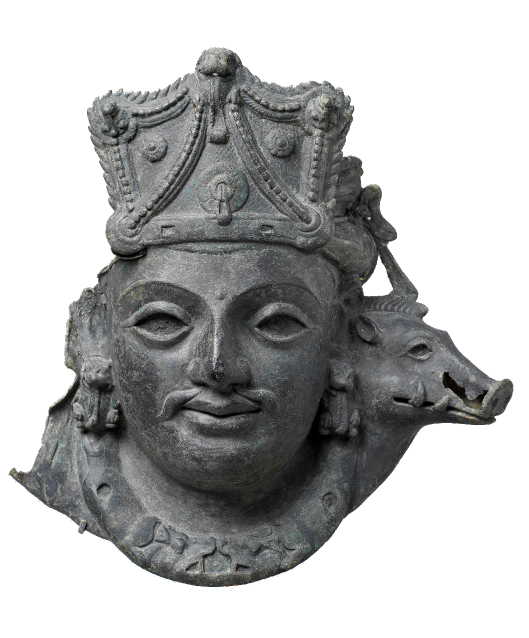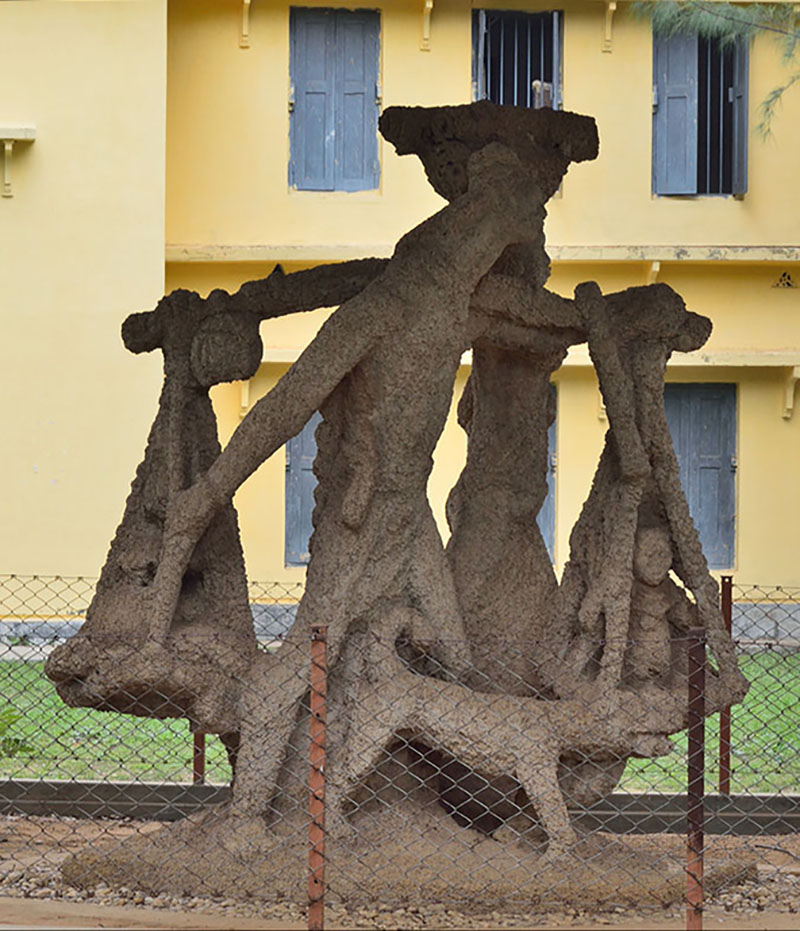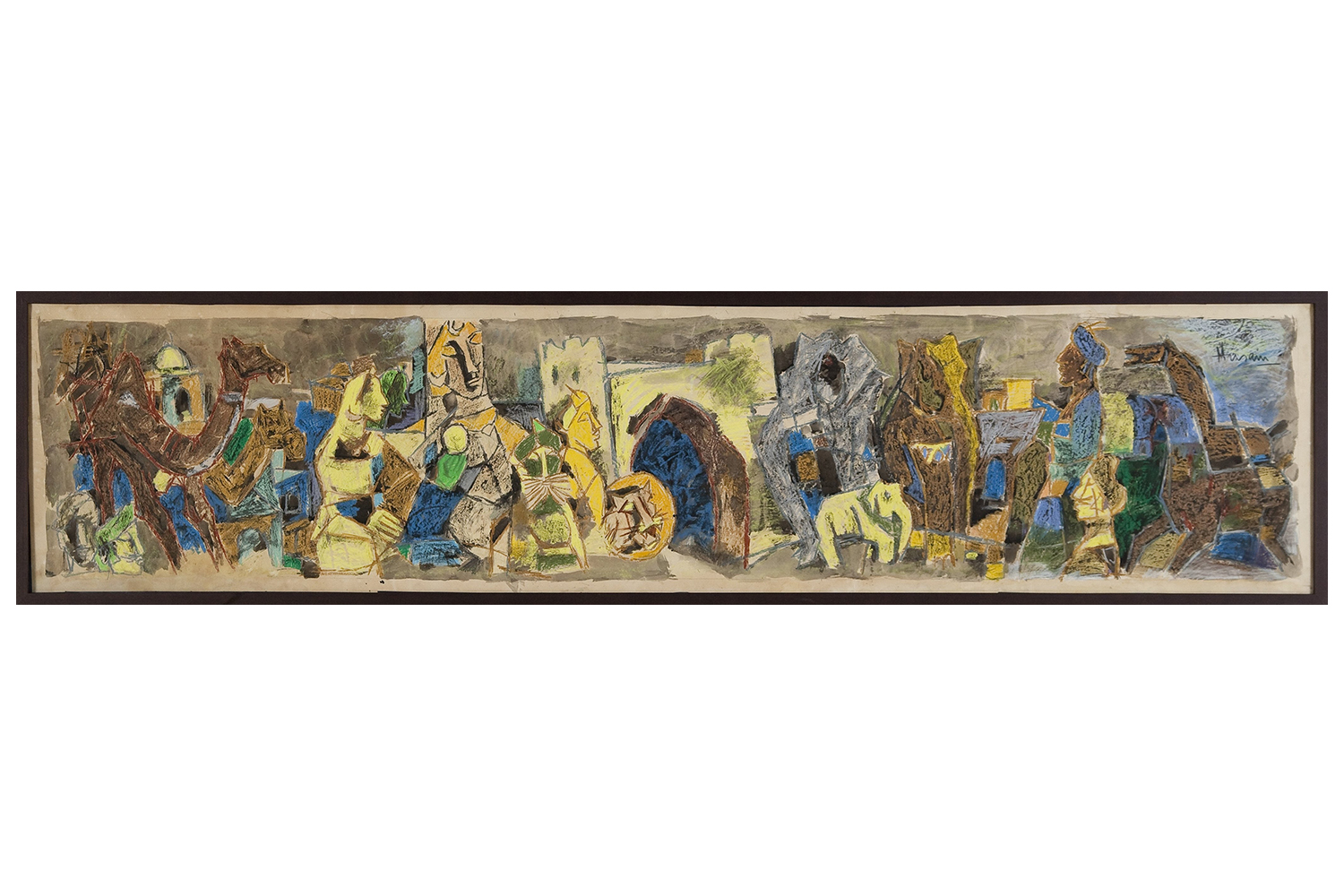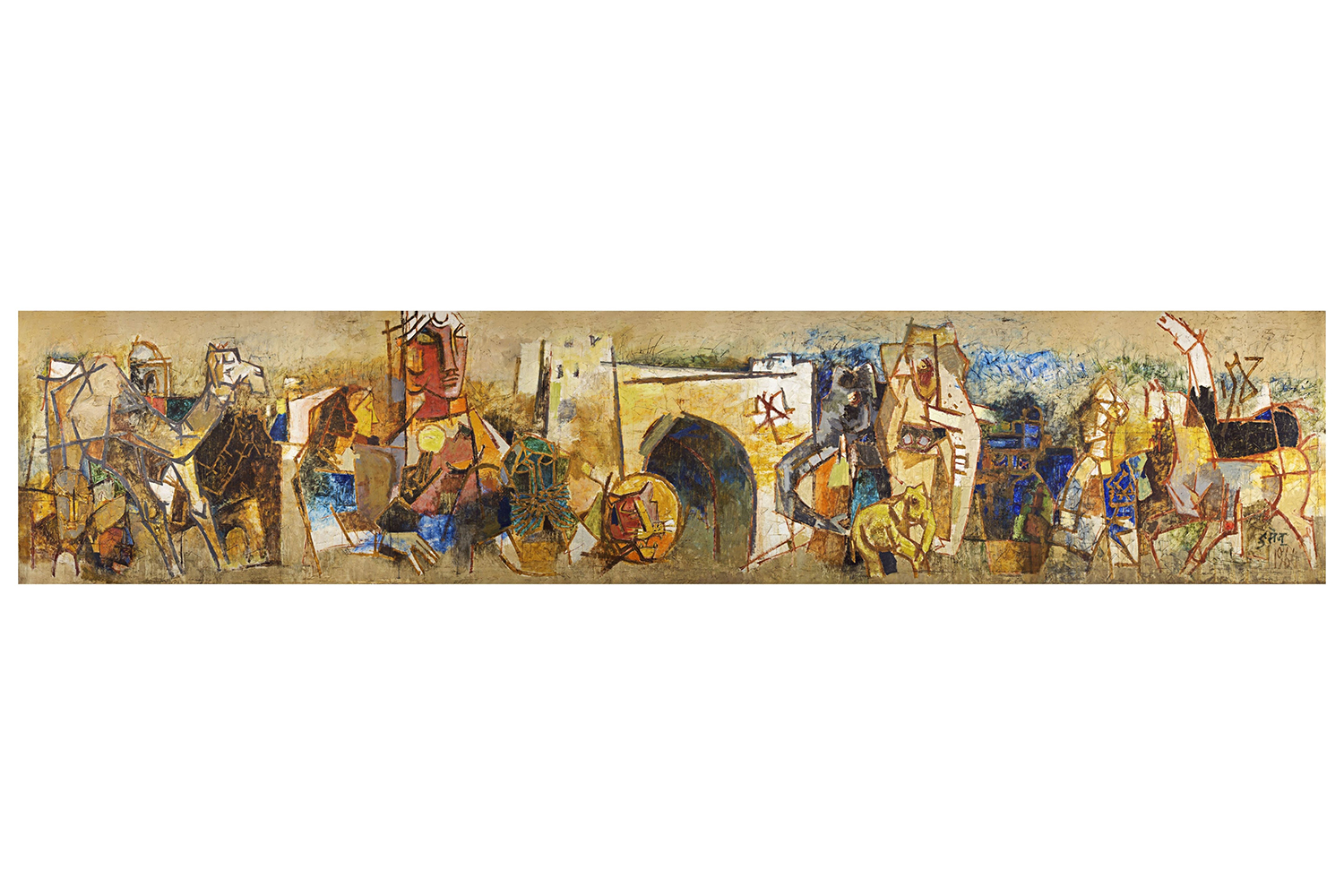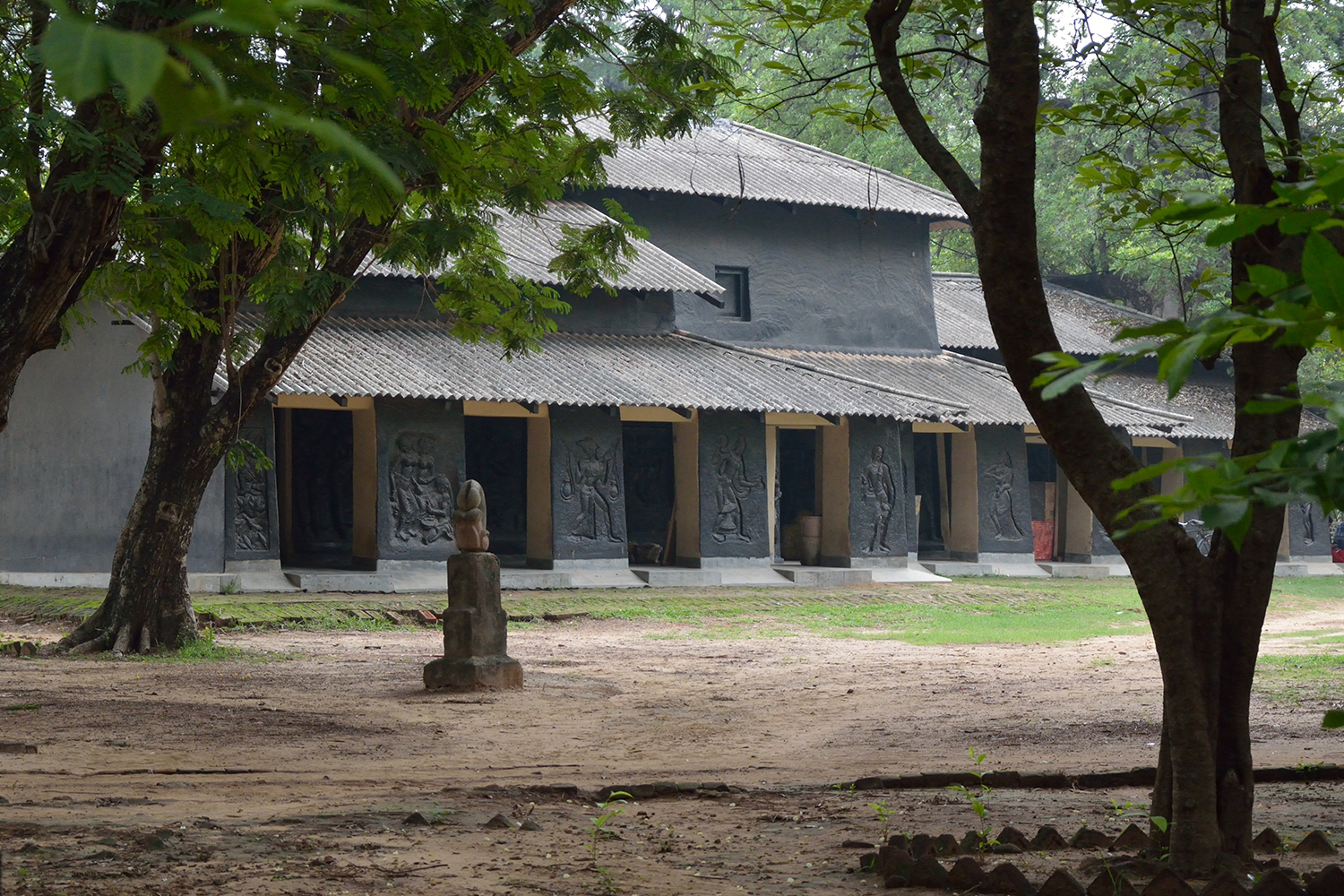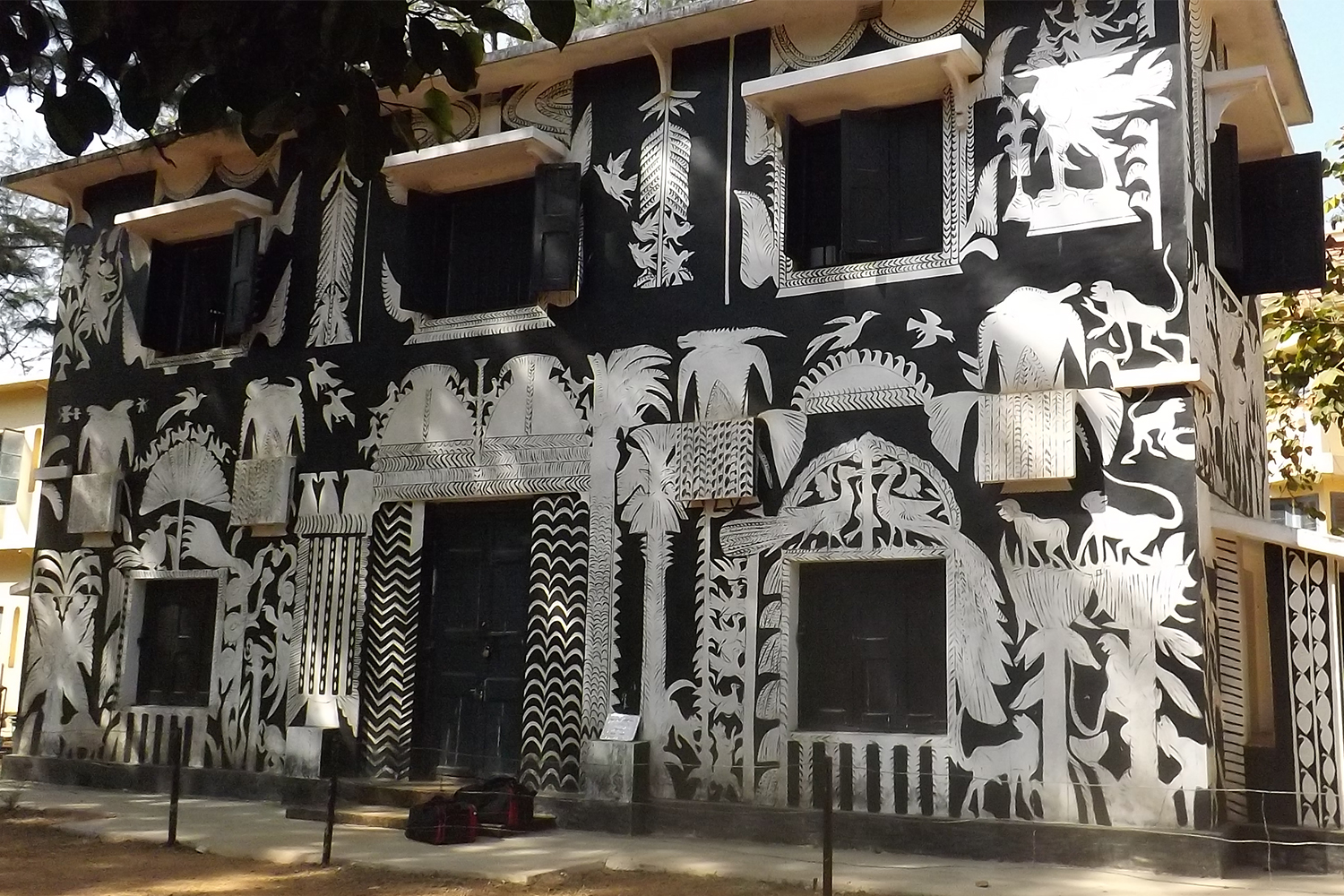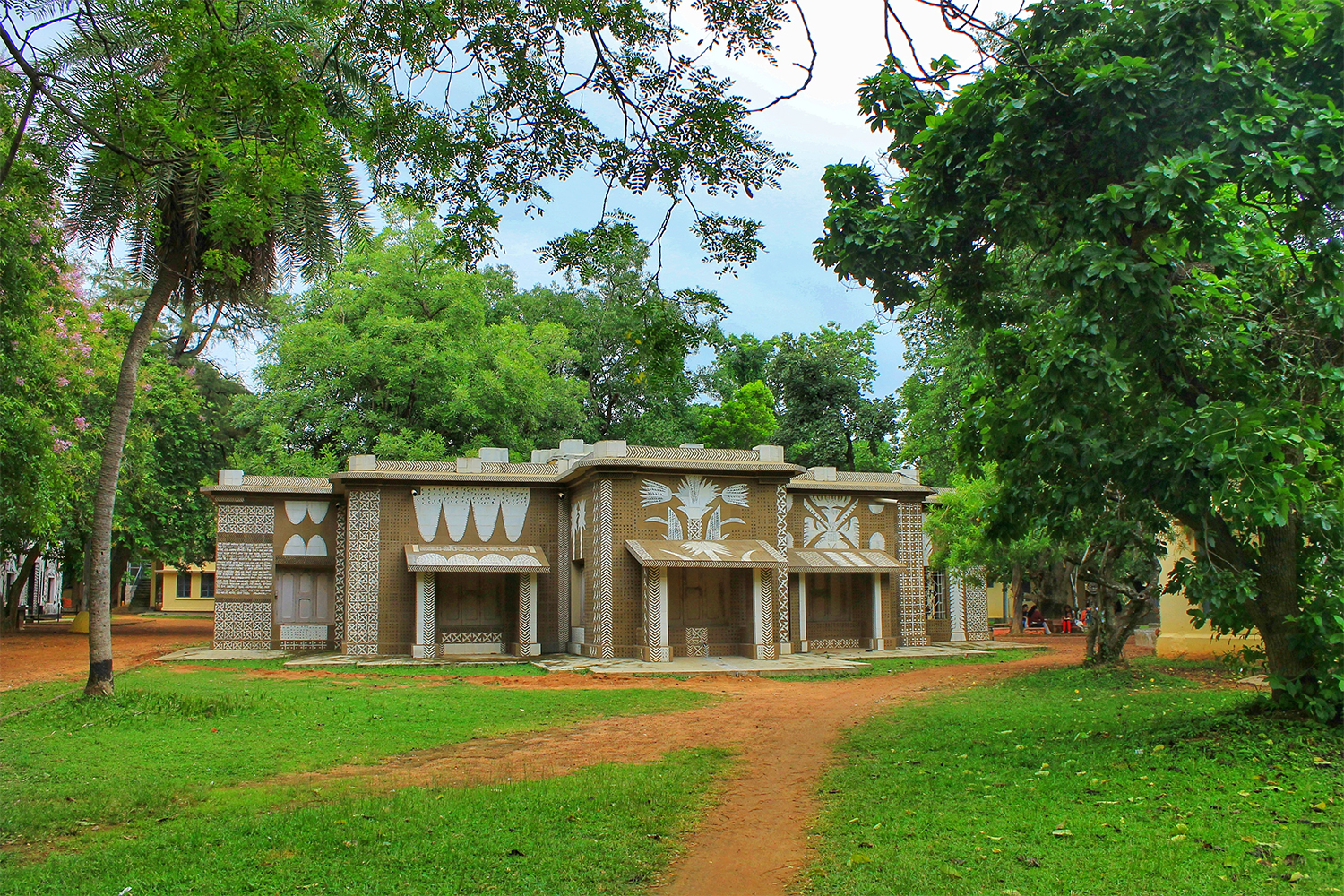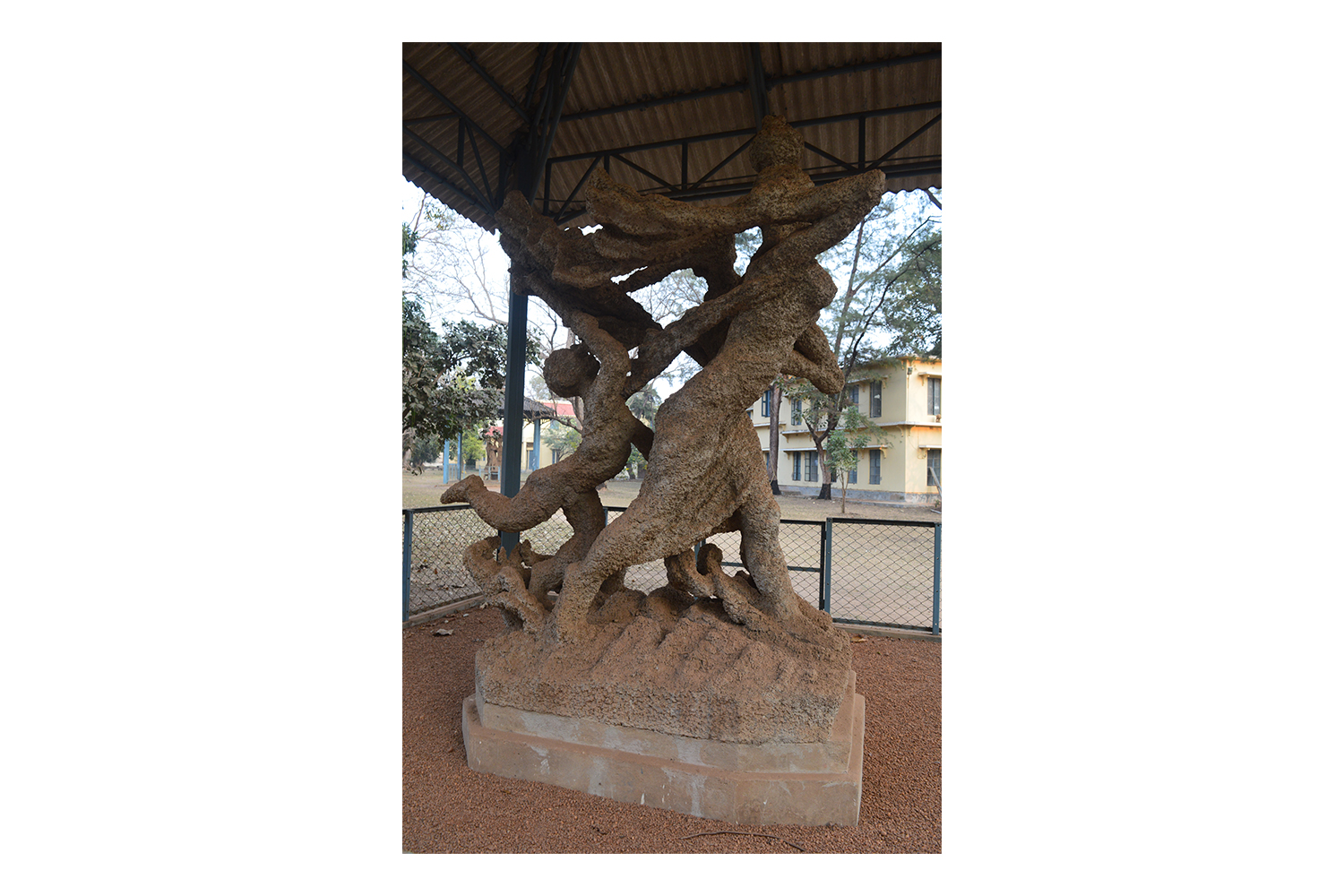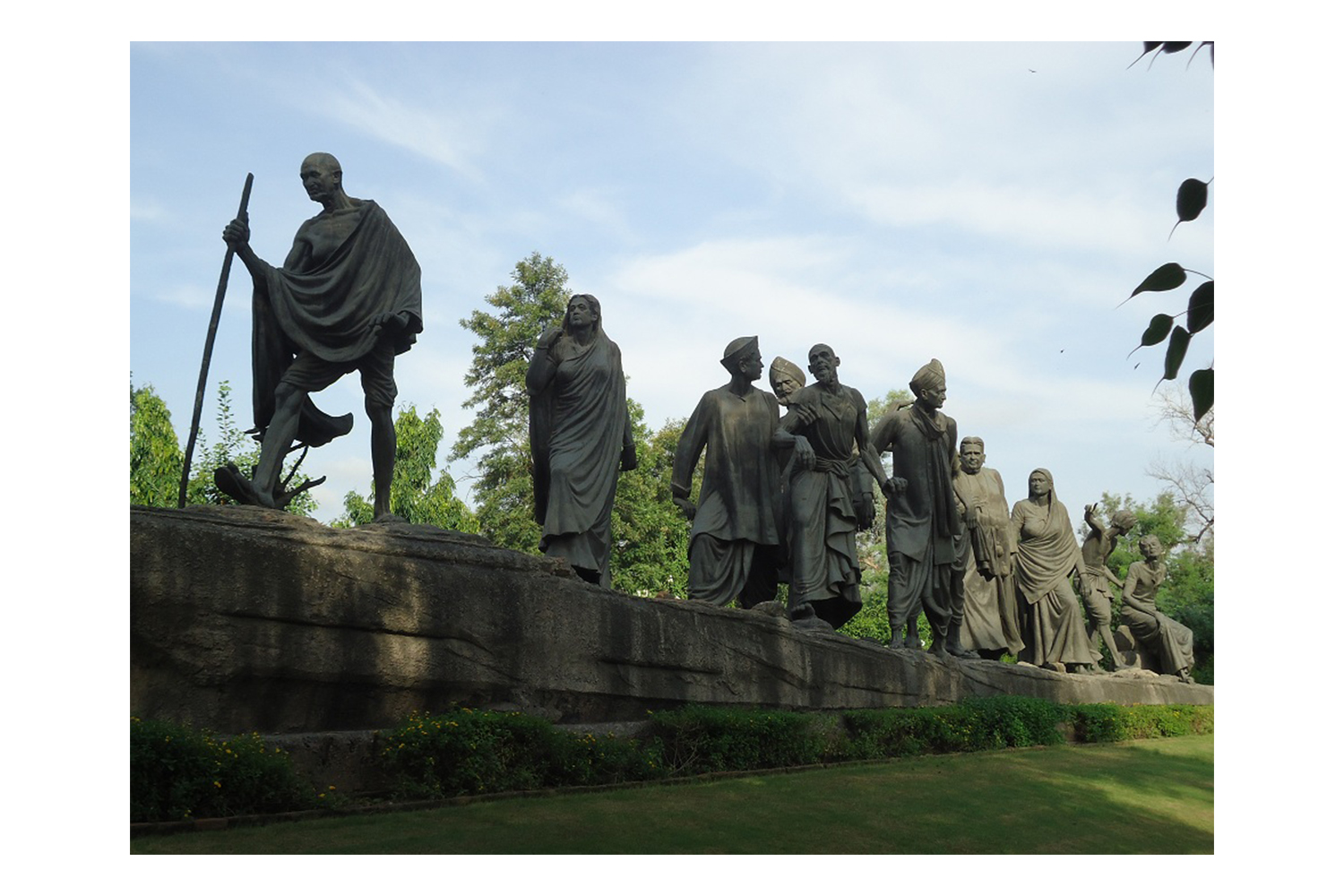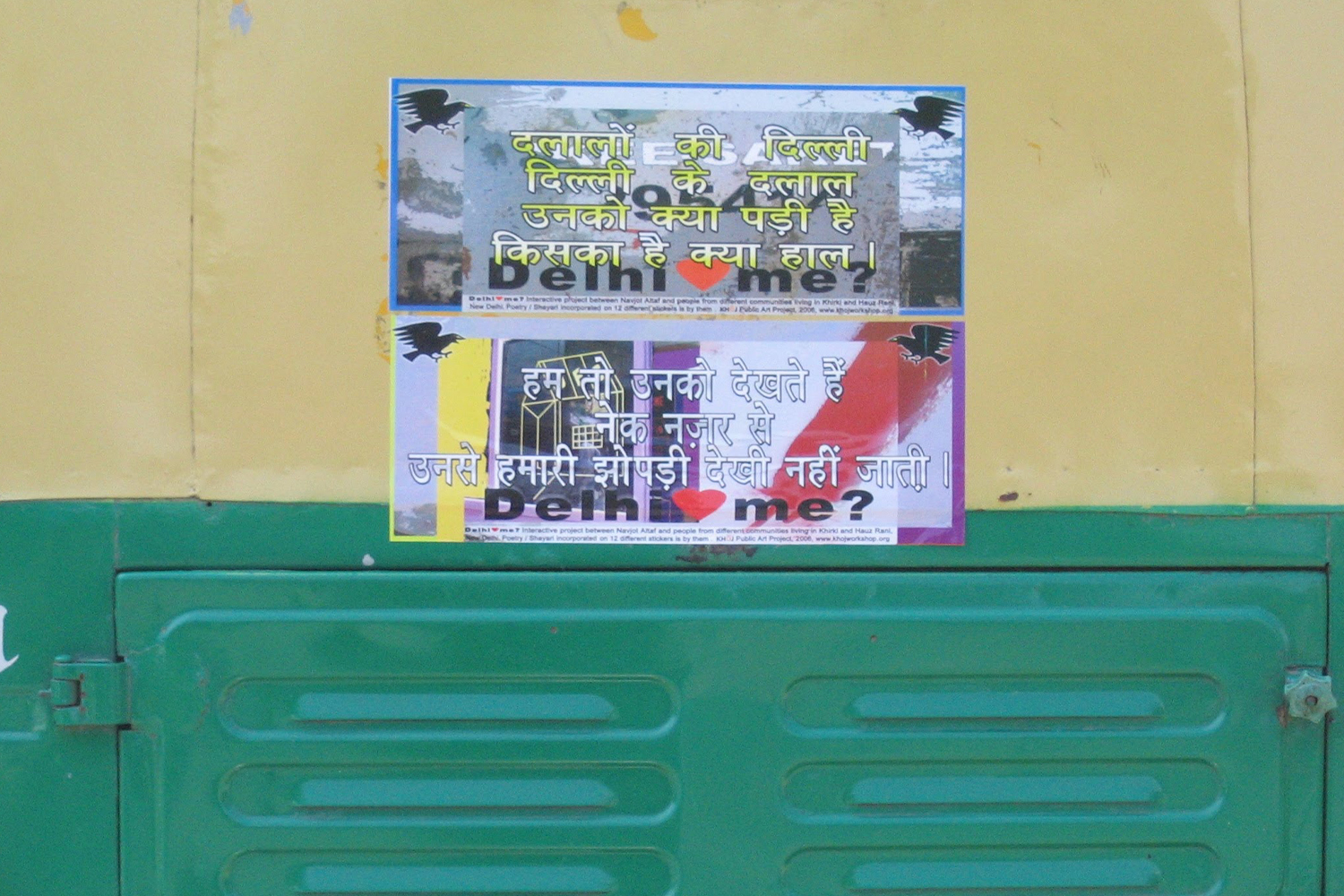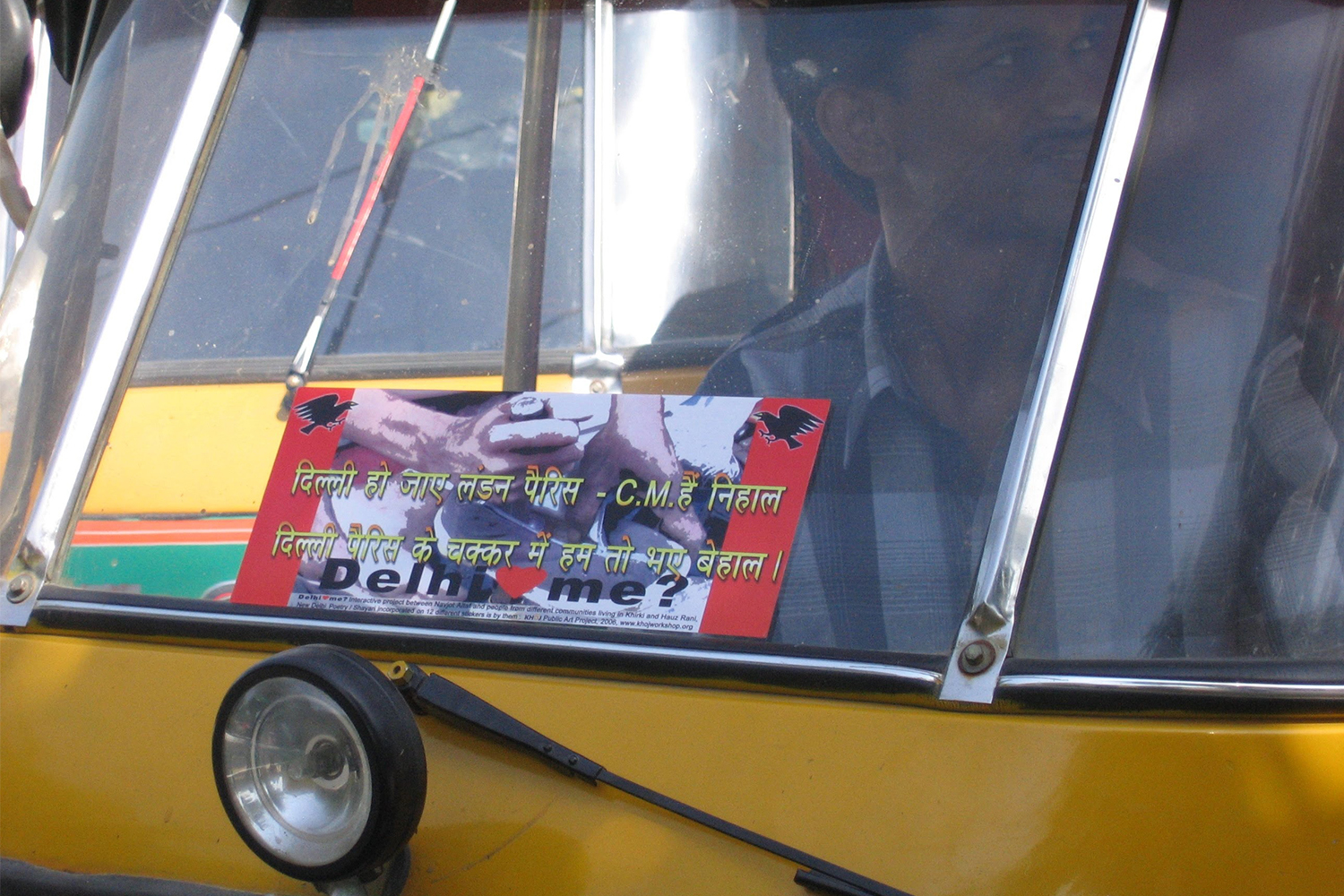ARTICLE
Public Art in India
Artists such as Ravi Agarwal and Atul Bhalla have looked at the ecological effects of urbanisation and industrialisation, focusing on raising awareness and inciting public concern through their works. Agarwal’s work Extinction (2009) — which looks at how a specific vulture population has been virtually wiped out in New Delhi due to the use of toxic pesticides — aimed at engaging the public through talks, lectures and a documentary media project displayed in public places. Chabeel (2009) by Bhalla reflected on the historical route of the river Yamuna, which he invoked by placing a large pitcher made of white marble at Kashmere Gate in New Delhi. Shaina Anand and Ashok Sukumaran’s work, Motornama Roshnara (2009), involved local communities reflecting on the decline of their industrial neighbourhood in New Delhi.
Contemporary works in public have sought to explore the relationships between urban spaces, the socio-political climate and ecology. Artist collectives such as the Safdar Hashmi Memorial Trust (SAHMAT) organised art programmes that incorporated public transport such as rickshaws to display their artworks and posters, responding to the widespread communal violence in the 1990s. Navjot Altaf created a work titled Delhi Loves Me? (2005), that involved bumper stickers with poetry printed on them, which the artist pasted on rickshaws across the city. The Fearless Collective, initiated by artist Shilo Shiv Suleman, has undertaken several projects across India and abroad, in collaboration with artists to complete public mural works. Most recently, the collective responded to the Shaheen Bagh protests by creating artworks in Lucknow and New Delhi. Artist Leena Kejriwal launched the Missing Link Trust, a not-for-profit organisation that sought to draw attention to gender-based violence and discrimination in the subcontinent through collaborative public works of art. The organisation spearheaded the Stencil Project in 2015, which involved volunteers and members of the organisation stencilling the silhouette of a girl on the walls of public places across Kolkata. Kejriwal’s mural Missing Mural (2017) in Kolkata also involved painting silhouettes against a wall, representing the growing number of missing women. Another notable organisation is St+art India, which was founded with the aim of promoting and facilitating street art and graffiti across the country.
Public artworks often suffer damage and destruction due to lack of preservation, mishandling and vandalism. A landmark case in the history of artistic copyright in India was filed by Amar Nath Sehgal in 1992, when a bronze mural by the artist, commissioned in 1957 and placed in Vigyan Bhawan, New Delhi, was dismantled and placed inside a room in 1979. Sehgal appealed to the Delhi High Court citing improper handling of the work which had led to minor damages. Sehgal’s case paved the way for provisions around artistic copyright and claims against significant vandalism and destruction of art. Spark, created in the 1960s by Piloo Pochkhanawala and commissioned by the Bombay Electricity Supply & Transport (BEST), Mumbai, which was located at Haji Ali Circle, Bombay (now Mumbai), was destroyed during transport and municipal repairs in the 1990s. A to-scale miniature replica of the sculpture was installed in front of the National Gallery of Modern Art, Mumbai in 2002. More recently, this replica went missing from its location, and the site of the original sculpture was replaced with a sculptural bust of political leader Bal Thackeray. Similarly, a sculpture based on RK Laxman’s Common Man by Suresh Sakpal, located at Worli Sea Face, Mumbai, suffered severe damage from natural sources until it was dismantled for repairs. Jatin Das filed a case against the Steel Authorities of India Limited (SAIL) in 2012 after he discovered that his welded sculptural work Flights of Steel (1995), commissioned by SAIL and established in Bhilai, Chattisgarh, had been dismantled and sent to a zoo. Anjolie Ela Menon’s murals at the LIC Office, New Delhi, were stolen piece-by-piece over the years. More recent projects that also invited some controversy include the steel-based work Sprouts (2008) by Vibhor Sogani, located under the AIIMS highway in New Delhi and which was criticised for its replication of trees at the site of an actual park after replacing the trees with steel works.
Institutions and public art festivals have increased the visibility and commissioning of public art works in the country. However, public efforts and grants dedicated to public art have been working towards their preservation, including the RPG Art Foundation, which has commissioned several public works, such as Rhino by Arzan Khambatta, located at Juhu, Mumbai. Organisations such as KHOJ International Artists’ Association and the Foundation for Indian Contemporary Art regularly organise workshops and grants that support public art projects. Public festivals such as the Kala Ghoda Arts Festival, which has been held annually since 1999, create interventions in public spaces by transforming a section of Mumbai’s Fort area into a festival with street art installations.
Bibliography
Our website is currently undergoing maintenance and re-design, due to which we have had to take down some of our bibliographies. While these will be re-published shortly, you can request references for specific articles by writing to hellomapacademy@map-india.org.
